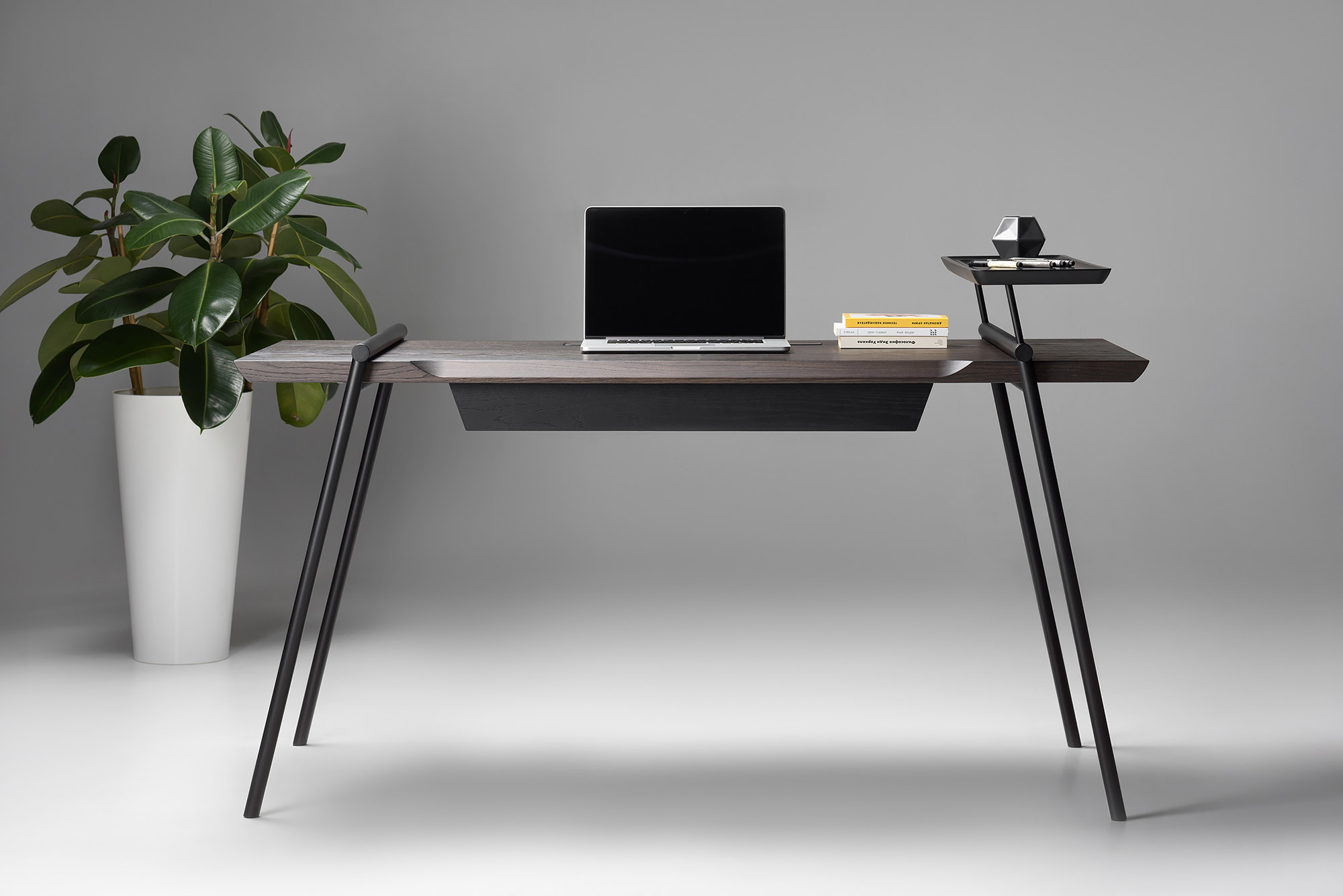

When you sit with your back against this lumbar support, you should have 1-2 inches between the back of your knees and the chair. Make sure it supports your lower spine where it naturally curves toward your belly. And remember that just because it’s labeled “ergonomic” doesn’t mean it actually is. If you can, try it before you buy it, as everyone's body is different. Chair: If you're sitting, you'll want an ergonomic chair.And if you feel tension in your wrist when using your mouse, consider a palm rest.


Here are some good ergonomic mice and mouse alternatives. Consider getting an external mouse that feels comfortable in your hands.
#MINIMALIST DESK HOW TO#
With that out of the way, let's talk about how to set up your desk. But, again, alternating positions is important, so you might need a sitting desk too. If you really want to go for it, you could try a treadmill desk, which provides just a smidge of exercise while you're working, and is said to enhance creativity. You can do this by getting a tall stool for your standing desk, a converter for your sitting desk, or by purchasing a desk that changes heights easily. So the best solution is probably to alternate between the two. With that said, standing all day comes with its share of problems too. It has been shown to improve productivity, and relieve the many issues involved with sitting all day, which includes increased blood pressure, spine damage, cardiovascular disease, and much more. Now that you know how to position your body, we should tackle standing vs sitting. Standing is the same deal minus the leg stuff.Ĭheck out this workspace planner where you can enter your height and it'll tell you how high your desk, monitor, chair, etc. Keep in mind that this is not one-size-fits-all.Frequently check your posture and adjust it.The screen should have a 10-20 degree tilt, no more.The top of the screen should be at eye level.Your face should be 20-30 inches from the monitor.Your back and neck should be straight but relaxed.Your lower arms should be at 90-120 degree angles to your upper arms.Your upper arms should hang down loosely.Your feet should be flat on the floor (or on a footrest).Your lower legs should be at 90-130 degree angles to your upper legs.Your upper legs should be at 90-120 degree angles to your back.According to the Canadian Centre for Occupational Health and Safety, the following posture is best for your body while working at a computer (though they note that shifting out of this position from time to time can be beneficial): Nobody wants repetitive strain injury (RSI), back pain, or fatigue, all of which can come from working at a desk day in and day out. Ergonomic desk setupįirst and foremost, it's important to set your body up for success. So here’s what I’ve learned on the topic. It also helps you avoid injuries that are shockingly common due to poor posture and repetitive movements associated with sub-optimal work setups. Having the right rig makes work easier, more productive, and more enjoyable. That's fine short-term, but it's beginning to lose its quirky just-moved-in vibe. Thanks to a recent move, I currently alternate between the dinner table and a rickety, make-shift standing desk that I created out of a precarious combination of boxes and chairs. Hopefully, you can benefit from what I'm learning. I'm trying to optimize my home office, so I've been digging into desk setups.


 0 kommentar(er)
0 kommentar(er)
